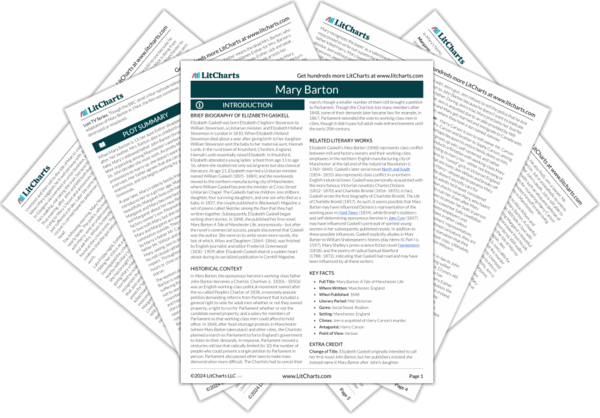Though Margaret needs money, she performs sewing work for free to help a poor widow, despite the fact that such work is exacerbating her progressive blindness. Margaret’s altruism and self-sacrifice embody the community-oriented mutual aid that the poor, working-class characters give one another throughout the novel. On the other hand, Margaret’s decision to continue working despite the damage to her eyes underscores the desperate economic situation of poor Manchester residents in mid-Victorian England.
